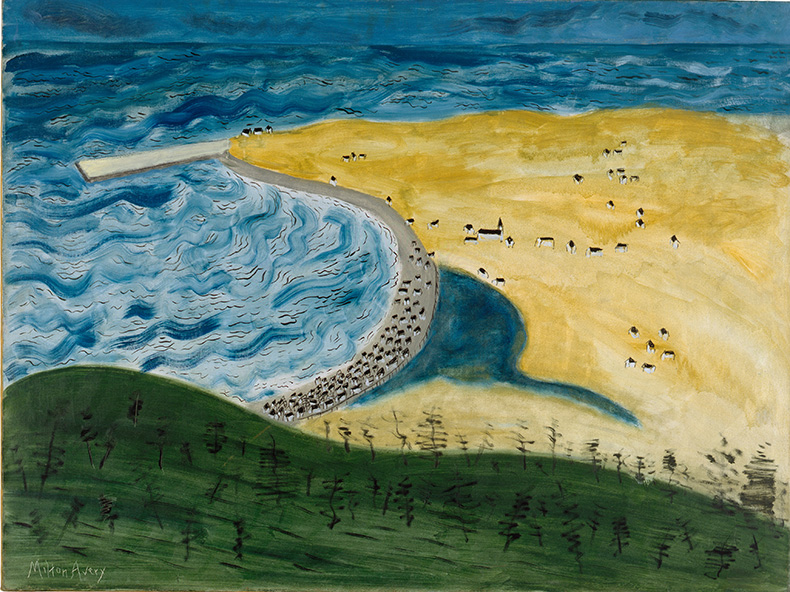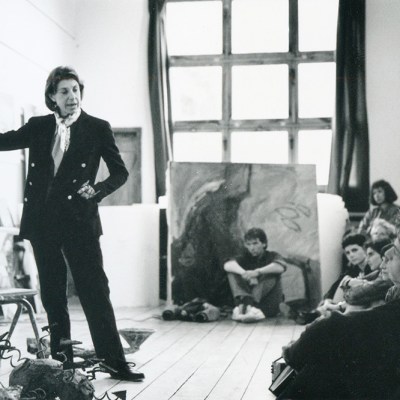From the September 2022 issue of Apollo. Preview and subscribe here.
If you have never heard of Milton Avery (1885– 1965), whose works are currently on show at the Royal Academy, then do not despair: you were not meant to have. The point of ‘Milton Avery: American Colourist’ is that a British audience should throw up its hands in astonishment at a man ‘worshipped by Abstract Expressionists Mark Rothko and Barnett New- man’, hailed by the New York Times as second only to Matisse as a colourist, and yet whose name has never been heard. How can this be?
Several answers suggest themselves. The first is that some artists simply do not travel well, so Avery might be a Ben Nicholson in reverse, celebrated on one side of the Atlantic and not on the other. This, though, is not entirely the case. If Avery is unknown in Europe – this is ‘the first comprehensive exhibition of his work’ here – then he is hardly less so back home. Until a version of this show opened at Fort Worth in 2021 and then the Wadsworth Athenum in early 2022, his last major show in the US was in 1982 at the Whitney Museum of American Art – the emphasis heavily on ‘American’. Since then, his work has been seen, mostly in exhibitions of works on paper in smaller regional museums and commercial galleries.
Perhaps an outlier, then. Art history and the art market like their definitions neat. If Avery was admired by the Abstract Expressionists, he was a generation too old to have been one of them, born in 1885, three years after Edward Hopper and two before Georgia O’Keeffe. He was approaching 70 when Rothko made the first of his colour field paintings, which may in part owe their luminous saturations to Avery’s palette. (The two men had known each other since the late 1920s, and would paint together in Provincetown each summer from 1957 to 1961.) And yet Avery’s coevals and younger admirers suggest that his lack of a handy historical tag was not the problem.

Neither Hopper nor O’Keeffe is easy to pigeonhole in art historical terms, and the New York School artists were defined by a bitter refusal to paint like each other. It was 1950 before Robert Motherwell hit on a title for the tendency that most of its members could agree on, and then in the teeth of hot opposition from Willem de Kooning, who fumed, ‘It is disastrous to name ourselves.’ As Nathaniel Pousette-Dart, father of New York School painter Richard, said, ‘American [art] is… in a healthy condition for the very reason that it has no one individual or group dominating it. In America, artists still have freedom of expression and it is the one thing we must fight to retain.’
Rugged individualism is not Avery’s problem, then. So, what? ‘Milton Avery: American Colourist’ is obviously meant as a corrective, but does not address the question of why correction might be needed. Perhaps the clearest evidence of this hangs on the Academy’s walls.
There is, most pressingly, Blue Sea, Red Sky (1958), in a room towards the end of the show. Painted in oil on canvas, this suggests a compliment returned from Avery to Rothko for the younger man’s absorption of his own colourism. The two related works on paper show that Rothko was not a passing fancy for Avery: the smaller paper painting Sand, Sea and Sky, was made in 1953, five years before Blue Sea, Red Sky. What seems odd is that Avery should have persisted so long with an experiment whose rules he clearly did not understand.
In 1957, Rothko was in the process of darkening his palette. The most immediate (and best known) result of this was the so-called Seagram Murals of the following year, a number of which are in the Tate. Rothko took the saturated colours of a Provincetown summer and abstracted them to those of the Tate’s Black on Maroon (1959); from Avery’s colour sense to Rothko’s own. Yet Blue Sea, Red Sky is abstract only in the sense that it is not representational. Pictorially, it takes Rothko nowhere, and Avery himself little further. The real departure it marks is in his practice. Until 1957, summers had been devoted to drawings and watercolours. Only now, in his seventies, did Avery paint summer canvases, which additionally grew larger and larger – ‘like the abstract boys’, as he guilelessly enthused to a dealer. Yet, as Blue Sea, Red Sky shows all too painfully, being an abstract boy meant more than painting big rectangles.




